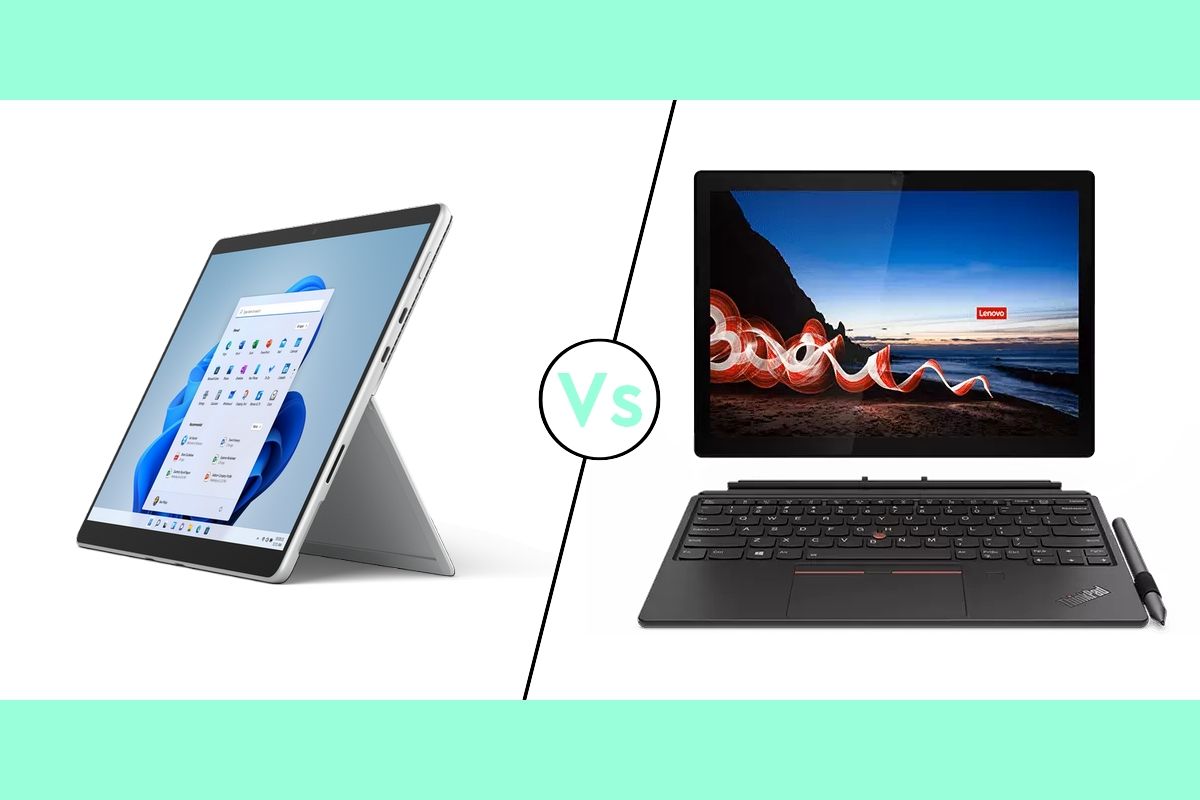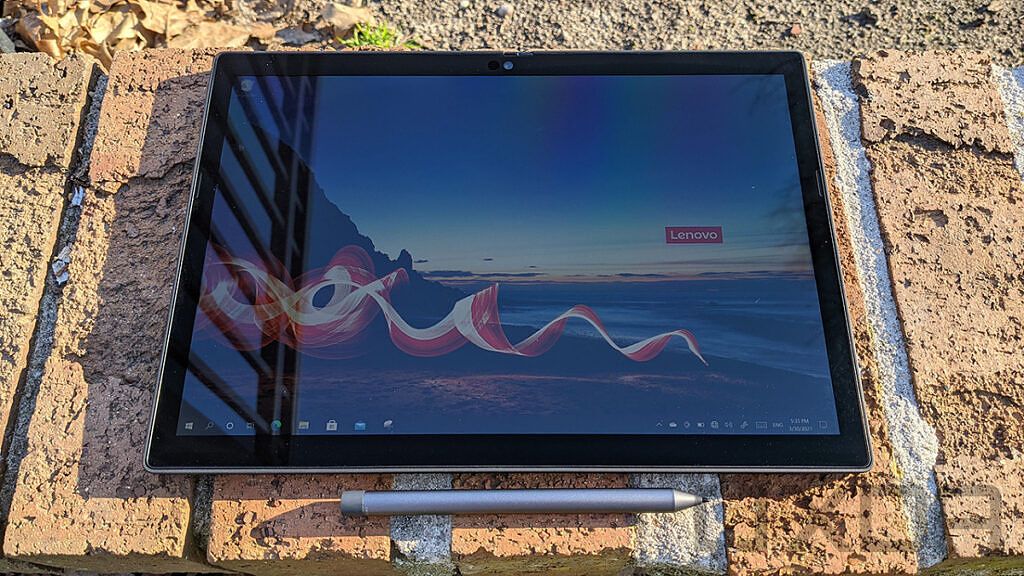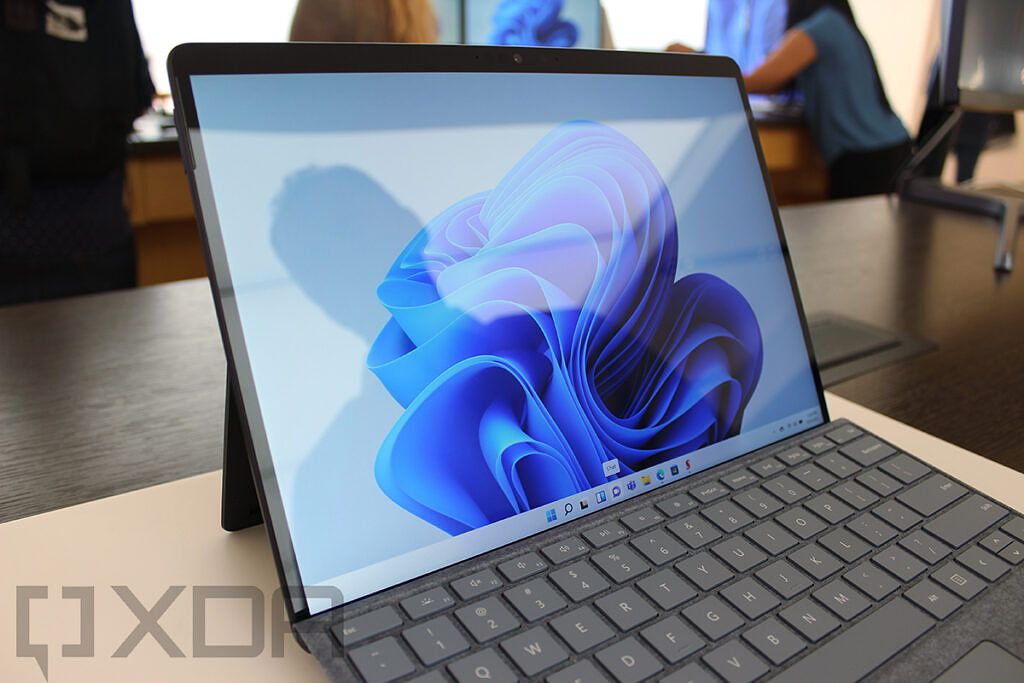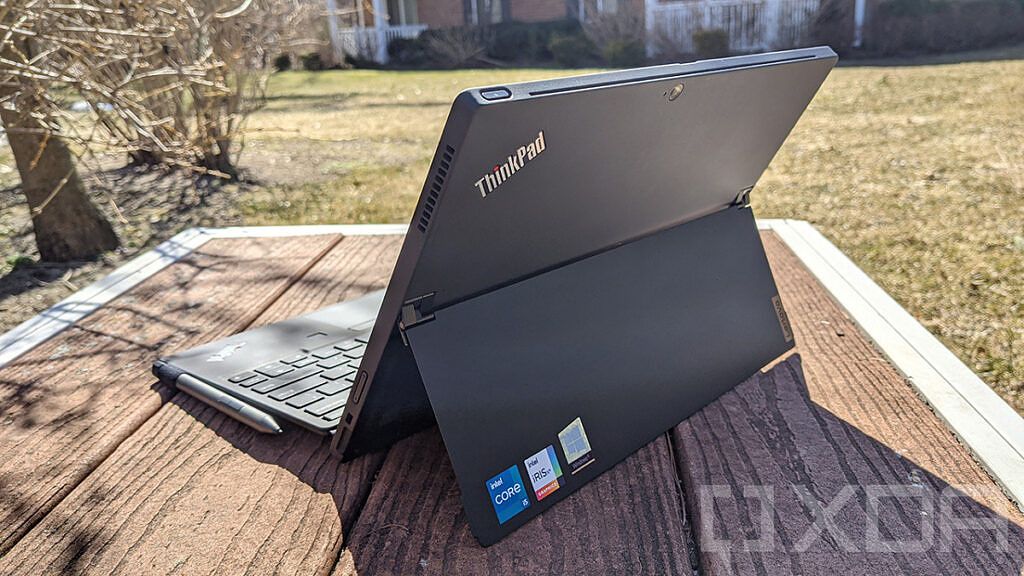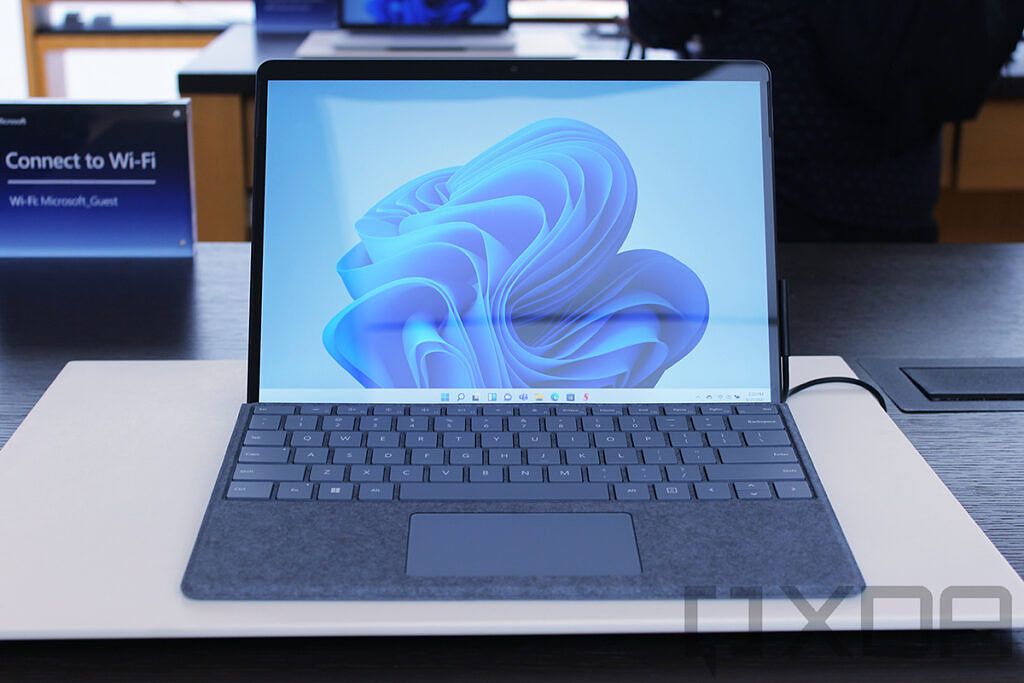Microsoft's recently launched Surface Pro 8 is one of the most exciting Surface devices in years. With a new design and a larger screen with a 120Hz refresh rate, the Surface Pro 8 is the biggest upgrade to the Surface Pro family in many years. That doesn't mean it doesn't have stiff competition though. We're going to compare the Surface Pro 8 to the Lenovo ThinkPad X12 Detachable to find out which one you should buy.
These two tablets have similar form factors and starting price, but otherwise, there are quite a few differences in specs and design. If you're on the fence between the two, we're going to take a closer look at what each one offers.
Surface Pro 8 vs ThinkPad X12 Detachable: Specs
|
Surface Pro 8 |
Lenovo ThinkPad X12 Detachable |
|
|---|---|---|
|
Processor |
|
|
|
Graphics |
|
|
|
RAM |
|
|
|
Storage |
|
|
|
Display |
|
|
|
Audio |
|
|
|
Webcam |
|
|
|
Biometric authentication |
|
|
|
Battery life |
|
42Wh battery
|
|
Ports |
|
|
|
Connectivity |
|
|
|
Colors |
|
|
|
Size (WxDxH) |
|
|
|
Weight |
|
|
|
Starting price |
$1,099.99 (consumer models with Core i5) |
$1,099.80 including keyboard (varies) |
Performance: The Surface Pro 8 has more powerful processors
At a glance, the processors in the Surface Pro 8 and the Lenovo ThinkPad X12 Detachable may seem similar, but Intel's confusing naming schemes betray a significant difference. The models inside the ThinkPad X12 Detachable (with a 0 before G7) are Intel's Y-series processors, which means they use less power (between 7W and 15W), but in turn, run slower. Conversely, the models inside the Surface Pro 8 (with a 5 before G7) are from the U series, so they use more power (between 12W and 28W), but that allows them to run faster for longer.
For performance, that means you probably won't notice a difference in basic daily tasks, since the low-power processors can still run fast for short bursts. But for more demanding tasks, the processors inside the Surface Pro 8 will hold their own for longer. Looking at benchmarks in this case shows similar performance levels, but it's not exactly reflective of performance over longer periods of use. It's also worth noting that average scores aren't available for Y-series processors, so those results were picked at random.
|
Intel Core i5-1135G7 (average) |
Intel Core i7-1185G7 (average) |
|||
|---|---|---|---|---|
|
GeekBench (single/multi-core) |
1,287 / 4,793 |
1,255 / 4,202 |
1,465 / 5,200 |
1,417 / 4,855 |
The Y-series processors inside the ThinkPad X12 Detachable also have slower graphics, so that's another area where the Surface Pro 8 will be better.
The Surface Pro 8 is also available with up to 32GB of RAM, double what you can get with the ThinkPad X12 Detachable. For storage, both models offer the exact same configurations, however adding LTE support to the Surface Pro 8 limits you to just 256GB of storage. There's no such limitation on Lenovo's side.
Finally, in terms of battery life, Microsoft's Surface Pro 8 also pulls a victory, touting up to 16 hours of typical usage. Lenovo promises up to 10.36 hours based on the MobileMark 2018 test, which tests common business scenarios. The measurements aren't exactly set to the same standard, but they shouldn't be too far off from real life either way.
Display: The Surface Pro 8 is bigger, sharper, and smoother
Turning to the display, Microsoft's tablet is once again superior in almost every way. The display is larger at 13 inches -- but whether that's an advantage is a matter of preference -- and it comes at a much higher 2880 x 1920 resolution. It's one of the first Surface devices -- and Windows tablets in general -- to have a 120Hz refresh rate. That alone makes it a super interesting device, and on top of that, it also supports Dolby Vision. If you're interested in drawing with a pen, the Surface Pro 8 also includes a new processor that enables haptic feedback in the Surface Slim Pen 2, makes it feel like you're writing on real paper.
The Surface Pro 8's display is better in just about every way, and audio is more immersive, too.
On the other hand, the Lenovo ThinkPad X12 Detachable is much more basic, although not bad by any means. It's got a 12.3 inch panel, and a 1920 x 1280 resolution. That's a 16:10 aspect ratio, which is taller than a more typical display, but not as tall as the 3:2 panel of the Surface Pro 8. It also supports pen input, and unlike the Surface, it actually includes a pen in the box, so you don't have to worry about spending extra on it.
The Surface Pro 8 also touts better audio quality, featuring two 2W speakers with support for Dolby Atmos. The ThinkPad X12 also has stereo speakers, but they're only 1W each, so they won't be as loud or immersive.
On to the cameras, both tablets feature 5MP front-facing webcams, complete with IR support for facial recognition. The ThinkPad X12 Detachable has an advantage here for the more privacy-conscious, adding a physical shutter to the webcam. On the back, the Surface Pro 8 carries a 10MP camera with 4K video recording, which is better than the 8MP camera on the ThinkPad. For audio capture, both have dual far-field microphones, so you should sound great on either device.
Design
This is likely the most subjective of the comparison points, but there are some things worth mentioning here. Thanks to the larger screen, the Surface Pro 8 is larger in every dimension than the ThinkPad X12 Detachable, albeit not by a lot. It's also slightly heavier, at 1.96 lbs versus the 1.67 lbs of the ThinkPad. That probably won't make a huge difference since these are both still extremely portable devices, but if you do want the lightest option, that would be the ThinkPad X12.
Of course, this is not taking into account the keyboard, and here the Surface Pro 8 gains some ground. The Surface Pro Signature Keyboard, including the Surface Slim Pen 2, weighs 0.65 lbs, while the folio keyboard for the ThinkPad X12 Detachable weighs 0.75 lbs. With the keyboard, the Surface Pro 8 is still heavier, but the difference is smaller.
On that note, it's worth mentioning that the Surface Pro 8 doesn't include a keyboard or pen, and that's an additional $279.99 you'll need to spend for the two bundled together. The ThinkPad X12 Detachable includes its versions of both accessories in the box. Plus, the thicker and heavier keyboard of the ThinkPad may be more comfortable to type on thanks to that additional space.
With two Thunderbolt ports and Surface Connect, the Surface Pro 8 is generally more versatile.
As for ports, it's a balanced matchup, but the Surface Pro 8 is better and more versatile. It includes two Thunderbolt 4 ports, plus a Surface Connect port and headphone jack. The ThinkPad X12 only has one Thunderbolt port, another USB Type-C port without Thunderbolt, a Pogo pin connector (used for the keyboard), and the headphone jack. The Pogo pin connector might be useful for specific business use cases, but for most consumers, the Surface Pro 8 has a healthier supply of ports.
Connectivity: LTE is faster on the Surface Pro 8
If you're buying a tablet for portability, odds are you also care about staying connected to the internet as you move. LTE support is very important to some users and thankfully, both of these tablets support it. However, the Surface Pro 8 will likely give you faster speeds, with the Qualcomm Snapdragon X20 modem promising up to 1.2Gbps download speeds and 150Mbps uploads.
On the other hand, the Lenovo Thinkpad X12 Detachable uses a Fibocom L850-GL modem that only supports up to 450Mbps downloads and 50Mbps uploads, which is a drastic difference.
LTE is optional on both tablets, but it's also worth mentioning that LTE models of the Surface Pro 8 won't be available until 2022. Plus, adding LTE will limit your storage to 256GB on the Surface Pro 8, but the ThinkPad X12 Detchable doesn't have that limitation.
In terms of Wi-Fi and Bluetooth support, the two tablets are similar, so you should have a good experience either way. Both support Wi-Fi 6 and Bluetooth 5.1.
Bottom line
Looking at all of these aspects, it's apparent that the Surface Pro 8 is the better device across the board, with its biggest downside being the price. It has higher-powered processors, options for more RAM, a bigger and sharper screen, louder speakers, and a better camera on the back. Plus, when the LTE model launches, it will offer faster LTE speeds. Additionally, even though it doesn't include a keyboard or mouse, its base price already has an Intel Core i5 model, while you'll have to pay extra if you want a Core i5 in the ThinkPad.
There are a few reasons to get the ThinkPad X12 Detachable instead, but they're more so for specific types of users. Features like the privacy shutter for the webcam may be useful, and it's slightly smaller and lighter, and thus, more portable. Plus, even taking into account its weaker processor at the base level, it's still somewhat cheaper than the Surface Pro 8 considering the included keyboard and pen.
If you've made your choice, you can buy either one of the tablets below. Otherwise, you can check out the best Windows tablets out there to find some alternatives.
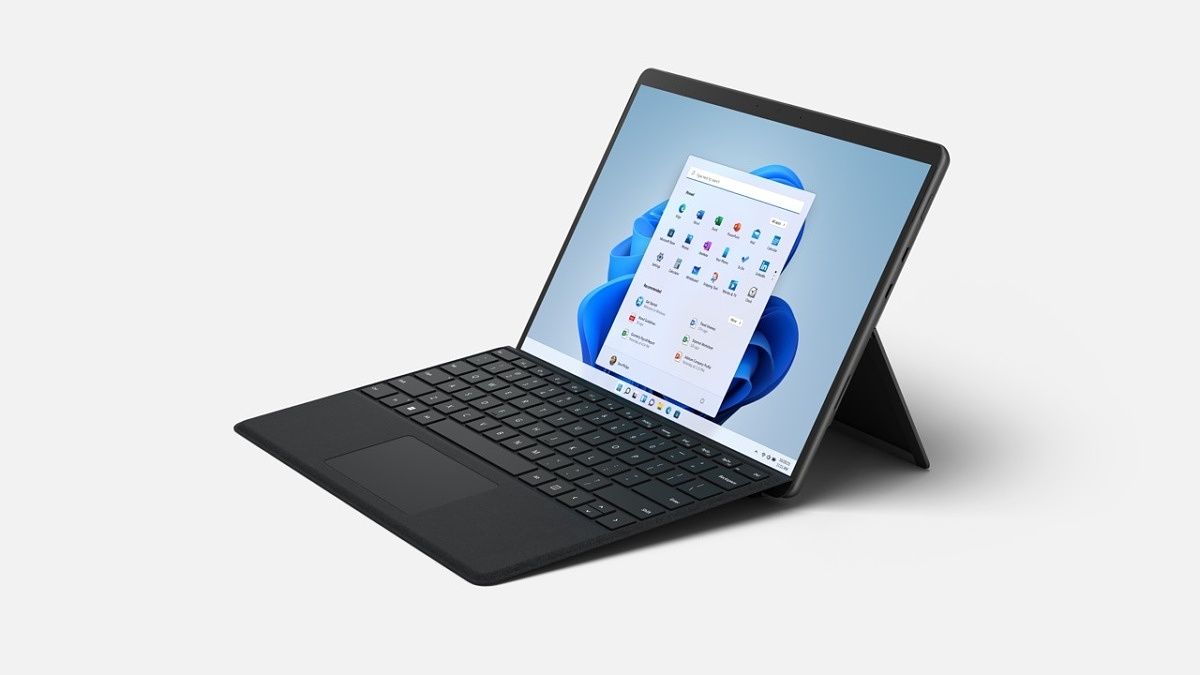
Microsoft Surface Pro 8
The Surface Pro 8 is Microsoft's flagship tablet, and it comes with an all-new design, a 120Hz display, Thunderbolt 4, and more.
If you want a more laptop-like experience on the Surface Pro 8, you can also buy the Surface Pro Signature Keyboard with the Surface Slim Pen 2.
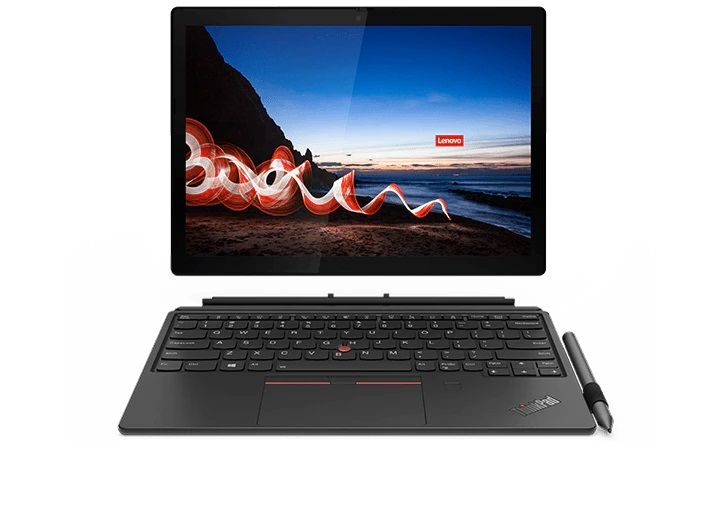
Lenovo ThinkPad X12
The Lenovo ThinkPad X12 Detachable is a lightweight and capable Intel-powered tablet, with a keyboard that can be attached whenever needed.

